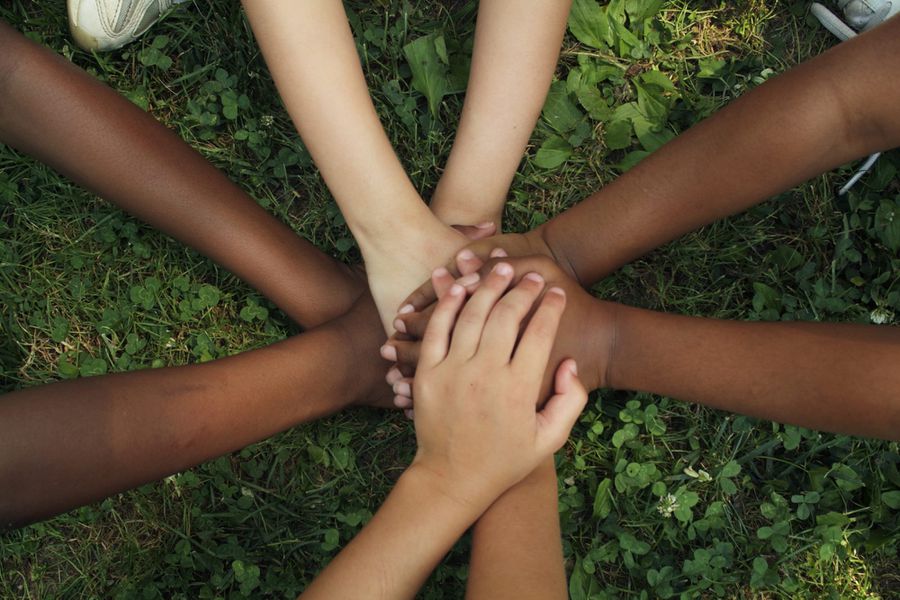
For centuries, Black people have contributed inventions, science, theories, music, life lessons, art, and more into American culture. And for far too long, they haven't gotten the recognition they deserve for those achievements. Black History Month is a good time to remember the unfair hardships placed on Black people throughout history, but also a time to celebrate their triumphs in spite of it.
When discussing the contributions over hundreds of years into just one short month, it’s likely that some things are being missed by kids and adults alike. We’ve rounded up 10 Black history facts that will not only clear up some common misperceptions but will hopefully inspire everyone to learn about the great contributions of Black people all year long.
- RELATED: How To Celebrate Black History Month With Kids
Black History Facts Everyone Should Know
1. There's a reason why Black History Month is in February.
Black History Month isn't celebrated in February due to pure coincidence. It was decided upon to coincide with President Lincoln and Frederick Douglass's birthdays. Both have long been aligned and celebrated in the Black communities for their efforts as abolitionists. What started as one week known as "Negro History Week" parallel to their birthdays was expanded into a month-long celebration formally declared Black History Month by President Ford in 1976.
2. Slavery is far from the only thing that has made life for Black Americans difficult.
Slavery may have ended in 1865, but many systemic issues continued to make surviving and thriving as a Black American difficult. For example, redlining in the 1930s outlined color-coded maps to show risky investment areas which not-so-coincidentally aligned with predominantly Black neighborhoods which continues to make home ownership and wealth-building through home ownership for Black people difficult today.
3. Immigrants are part of Black history, too.
Black History Month may have originated in the United States, but it’s important to remember that it’s inclusive of other cultures as well. According to Pew Research, currently, one in ten Black people in the United States are immigrants and contribute to the rich tapestry of American growth and history. For example, Kwame Ture was a prominent political activist and organizer in the civil rights movement who was born in Trinidad and raised in the United States. Meanwhile, Colin Powell was the son of Jamaican Immigrants.
- RELATED: The Best Black History Activities for Little Kids, Tweens, and Teens
4. Every year Black History Month has a theme.
Each year an American president endorses a specific theme for Black History Month. In 2022, the theme was Black Health and Wellness which explores the legacy of Black people and their contributions to wellness in western medicine and wellness industries such as doulas, midwives, herbalists in more. Previous Black History Month themes include African Americans and the Vote, The Crisis in Black Education, and The Black Family: Representation, Identity and Diversity.
5. A wealthy Black neighborhood known as Seneca Village existed where Central Park is in New York City today.
A predominantly Black neighborhood of nearly 200 residents existed in the Upper West Side from 82nd Street to 89th Street. The 40-acre village was the largest community of Black homeowners pre-Civil War. Black Americans were able to live there and experience voting rights, enjoy their schools, churches, and gardens until they were forced out of the area for the building of Central Park.
6. Disabled Black Americans are part of Black history, too.
Though Black History Month has been celebrated for many years, the contributions of those Black people with disabilities are rarely recognized or celebrated. Yet, 5.6 million Black Americans live with a disability. Meanwhile, it’s not widely known or mentioned that Harriet Tubman experienced epilepsy or that Muhammad Ali had dyslexia. Failure to mention or recognize the disabilities of Black achievers contributes to erasure and works against inclusivity.
7. Rosa Parks wasn't the first Black person to refuse to give up a seat on the bus.
Rosa Parks was famously credited for sparking the civil rights movement and Montgomery bus boycott when she refused to give up a seat to a white man in Alabama in 1955. However, it was Claudette Colvin who was arrested for failure to give up a seat on the bus several months prior to Rosa Parks.
8. Black people and people of color are not interchangeable terms.
There's a reason why the month is called Black History Month and not People of Color Month. While all Black people are people of color, all people of color are not Black. The term people of color encompasses anyone who doesn't identify as white or of European descent. When speaking specifically to Black issues or triumphs, it's important to use the word Black. Referring to people of color when you really mean Black people may only contribute to the erasure of complexities experienced by Black people.
- RELATED: Anti-Racist Curriculum: How to Talk to Your Kids About Black History
9. Black History Month is celebrated outside of the United States.
The month-long celebration may have started in the United States, but it’s recognized in Canada as well. Additionally, Ireland, the United Kingdom, and the Netherlands celebrate it in October.
10. The Civil Rights Act made it illegal for Black people to be denied service based on race, color, and religion or face segregation.
The Civil Rights Act of 1964 was signed by President Lyndon B. Johnson. Not only did it make segregation illegal, but it also prohibited the use of federal funds on discriminatory practices. The Civil Rights Act later inspired the Voting Act and Fair Housing Act of 1968.
